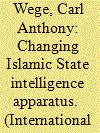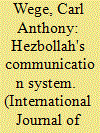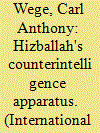| Srl | Item |
| 1 |
ID:
145310


|
|
|
|
|
| Summary/Abstract |
Historically, an observer could be forgiven for thinking that the art of fortune telling had been disguised by scientism and sold to national policymakers using descriptions like Estimative Intelligence, Long Range Analysis, and Strategic Futures.1 Policymakers, even when they should know better, harbor expectations that intelligence organizations should somehow accurately predict future events.2 The ability to predict phenomena relevant to foreign intelligence in the second half of the twentieth century was limited by a paucity of analytic methodologies, quantified data, and information technologies that could effectively exploit the data.3 Nonetheless, when compared to Cold War-era equivalents the newer analytic disciplines, improvements in analytic standards and methodologies, and advances in computational technologies are enhancing the scientific validity and reliability of Intelligence Community (IC) products. This generational shift in analytic rigor was codified in Intelligence Community Directive.
|
|
|
|
|
|
|
|
|
|
|
|
|
|
|
|
| 2 |
ID:
158757


|
|
|
| 3 |
ID:
181298


|
|
|
|
|
| Summary/Abstract |
This discussion examines how security and counterintelligence vetting practices vary across domains and how this informs our understanding of counterintelligence disciplines. Organizations in each domain must ensure that persons admitted as insiders can be trusted with sensitive information and the organization’s security. We look at some examples of counterintelligence vetting, seeking commonalities in vetting needs and practices between armed groups, corporations, and states. We compare, in depth, the vetting practices of Lebanese Hezbollah, the reconstituted Syrian intelligence services, the drug-trafficking group known as Los Zetas, and High-Value Technology Companies (HVTCs). The evident regularities and commonalities in counterintelligence vetting suggest cross-domain and cross-cultural targets for exploitation.
|
|
|
|
|
|
|
|
|
|
|
|
|
|
|
|
| 4 |
ID:
131044


|
|
|
|
|
| Publication |
2014.
|
| Summary/Abstract |
During the two generations of Hezbollah's existence the organization has grown from a clan-based network of terrorist cells to the most important stakeholder in the Lebanese polity. Its communication architecture evolved concurrently with the larger Hezbollah organization. The trajectory of Hezbollah's communications architecture has been in the direction of increasingly sophisticated communications and the need to transmit greater volumes of information securely across a growing organization.
|
|
|
|
|
|
|
|
|
|
|
|
|
|
|
|
| 5 |
ID:
116385


|
|
|
|
|
| Publication |
2012.
|
| Summary/Abstract |
Political scientist Roy Godson defined counterintelligence as the identification and neutralization of the threat posed by foreign intelligence services, and the manipulation of those services for the manipulators' benefit. 1 Organizational counterintelligence disciplines, while having focal entities, typically function as overlays across the whole of the intelligence enterprise. Between 2009 and 2011, the Hizballah organization engaged in a major counterintelligence sweep across Lebanon. Combined with other counterintelligence activity, since the 2006 Summer War (also called the Harb Tammuz) nearly 200 Lebanese citizens-Christians, Sunni and Shi'a Muslims, senior military and retired civilian executives-were arrested and credibly accused of espionage. Some of these Lebanese had spied on behalf of Israel for decades and others were more recently compromised. Following is a discussion of the increasing scope and complexity of Hizballah's counterintelligence apparatus in light of these developments.
|
|
|
|
|
|
|
|
|
|
|
|
|
|
|
|
| 6 |
ID:
165892


|
|
|